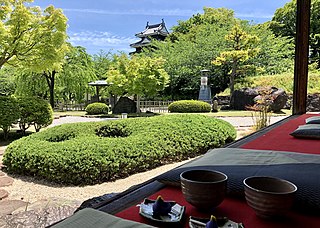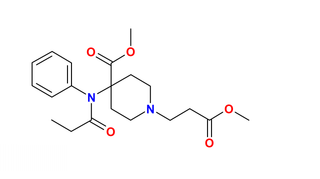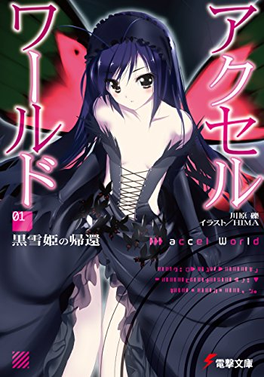
Surgery is a medical specialty that uses manual and/or instrumental techniques to diagnose or treat pathological conditions, to alter bodily functions, to reconstruct or improve aesthetics and appearance, or to remove unwanted tissues or foreign bodies. The subject receiving the surgery is typically a person, but can also be a non-human animal.

Nagoya is the largest city in the Chūbu region, the fourth-most populous city proper with a population of 2.3 million in 2020, and the principal city of the Chūkyō metropolitan area, which is the third-most populous metropolitan area in Japan with a population of 10.11 million. Located on the Pacific coast in central Honshu, it is the capital and most populous city of Aichi Prefecture, and one of Japan's major ports along with Tokyo, Osaka, Kobe, Yokohama, and Chiba.

Okazaki is a city located in Aichi Prefecture, Japan. As of 1 October 2019, the city had an estimated population of 386,999 in 164,087 households, and a population density of 999 persons per km². The total area of the city was 387.20 km2 (149.50 sq mi).

Anjō is a city in Aichi Prefecture, Japan. As of 1 October 2019, the city had an estimated population of 188,693 in 76,087 households, and a population density of 2,193 persons per km². The total area of the city was 86.05 square kilometres (33.22 sq mi).

Nishio is a city located in Aichi Prefecture, in the Chūbu region of Japan. As of 1 October 2019, the city had an estimated population of 169,984 in 65,553 households, with a population density of 1,054 persons per km². The total area of the city was 160.22 square kilometres (61.86 sq mi). It is a regional commercial and manufacturing center and the country's leading producer of powdered green tea.

The National Diet Library (NDL) is the national library of Japan and among the largest libraries in the world. It was established in 1948 for the purpose of assisting members of the National Diet of Japan in researching matters of public policy. The library is similar in purpose and scope to the United States Library of Congress.

General anaesthesia (UK) or general anesthesia (US) is a method of medically inducing loss of consciousness that renders a patient unarousable even with painful stimuli. This effect is achieved by administering either intravenous or inhalational general anaesthetic medications, which often act in combination with an analgesic and neuromuscular blocking agent. Spontaneous ventilation is often inadequate during the procedure and intervention is often necessary to protect the airway. General anaesthesia is generally performed in an operating theater to allow surgical procedures that would otherwise be intolerably painful for a patient, or in an intensive care unit or emergency department to facilitate endotracheal intubation and mechanical ventilation in critically ill patients. Depending on the procedure, general anaesthesia may be optional or required. Regardless of whether a patient may prefer to be unconscious or not, certain pain stimuli could result in involuntary responses from the patient that may make an operation extremely difficult. Thus, for many procedures, general anaesthesia is required from a practical perspective.

Aichi Prefecture is a prefecture of Japan located in the Chūbu region of Honshū. Aichi Prefecture has a population of 7,552,873 and a geographic area of 5,172.92 square kilometres (1,997.28 sq mi) with a population density of 1,460 inhabitants per square kilometre (3,800/sq mi). Aichi Prefecture borders Mie Prefecture to the west, Gifu Prefecture and Nagano Prefecture to the north, and Shizuoka Prefecture to the east.

Remifentanil, marketed under the brand name Ultiva is a potent, short-acting synthetic opioid analgesic drug. It is given to patients during surgery to relieve pain and as an adjunct to an anaesthetic. Remifentanil is used for sedation as well as combined with other medications for use in general anesthesia. The use of remifentanil has made possible the use of high-dose opioid and low-dose hypnotic anesthesia, due to synergism between remifentanil and various hypnotic drugs and volatile anesthetics.

The Tokyo National Museum or TNM is an art museum in Ueno Park in the Taitō ward of Tokyo, Japan. It is one of the four museums operated by the National Institutes for Cultural Heritage, is considered the oldest national museum in Japan, is the largest art museum in Japan, and is one of the largest art museums in the world. The museum collects, preserves, and displays a comprehensive collection of artwork and cultural objects from Asia, with a focus on ancient and medieval Japanese art and Asian art along the Silk Road. There is also a large collection of Greco-Buddhist art. As of April 2023, the museum held approximately 120,000 Cultural Properties, including 89 National Treasures, 319 Horyuji Treasures, and 649 Important Cultural Properties. As of the same date, the Japanese government had designated 902 works of art and crafts as National Treasures and 10,820 works of art and crafts as Important Cultural Properties, so the museum holds about 10% of the works of art and crafts designated as National Treasures and 6% of those designated as Important Cultural Properties. The museum also holds 2,651 cultural properties deposited by individuals and organisations, of which 54 are National Treasures and 262 are Important Cultural Properties. Of these, 3,000 cultural properties are on display at one time, with each changing for between four and eight weeks. The museum also conducts research and organizes educational events related to its collection.

Soichi Bunko is a library in Japan that holds the popular, non-academic magazines and books collected and prized by Oya Soichi, with continuations of the collection after he died. Magazines include those about the popular culture of the day. Oya Soichi played an important role as a social critic for 50 years, during which time he published translations, anthologies, and books and also accumulated over 200,000 magazines, journals, and books. After he died in 1970, Oya Soichi Bunko was founded in Hachimanyama, Tokyo and later in Ogose, Saitama in an effort to catalog the books written by Oya Soichi as well as make available his own significant body of work.
Hypnosurgery is surgery where the patient is sedated using hypnotherapy rather than traditional anaesthetics. It is claimed that hypnosis for anaesthesia has been used since the 1840s where it was pioneered by the surgeon James Braid. There are occasional media reports of surgery being conducted under hypnosis, but since these are not carried out under controlled conditions, nothing can be concluded from them.

The 1891 Mino–Owari earthquake struck the Japanese provinces of Mino and Owari in the Nōbi Plain in the early morning of October 28 with a surface wave magnitude of 8.0 and moment magnitude of 7.5. The event, also referred to as the Nōbi earthquake, the Great Gifu earthquake, or the Great Nōbi earthquake, is the largest known inland earthquake to have occurred in the Japanese archipelago.

The Meitetsu Gamagōri Line is a 17.6 km railway line located in Aichi Prefecture, Japan. The line connects Kira Yoshida Station in Nishio, with Gamagōri Station in Gamagōri. It is owned by Nagoya Railroad (Meitetsu) as an extension of the Meitetsu Nishio Line. The fare calculation classification for the line is B, which means the fare is calculated based on the actual distance multiplied by a factor of 1.15.

Seikadō Bunko Art Museum (静嘉堂文庫美術館) is a museum of East Asian art that opened in Setagaya, Tokyo in 1992. The museum's gallery moved to Meiji Seimei Kan near Tokyo Station in Chiyoda, Tokyo in October 2022, but the foundation continues to operate and manage its collection in its former building in Setagaya.

Accel World is a Japanese light novel series written by Reki Kawahara and illustrated by HiMA. The series began publication in ASCII Media Works' Dengeki Bunko imprint in February 2009 and is licensed in North America by Yen Press. Two manga series began serialization in Dengeki Bunko Magazine from May 2010, with another series beginning serialization in Dengeki Daioh in January 2013. An anime adaptation produced by Sunrise aired in Japan between April and September 2012. An English-language version began streaming on Viz Media's Neon Alley service in April 2013. Two video games were released for the PlayStation Portable and PlayStation 3 in September 2012 and January 2013, each containing an original video animation (OVA) episode. An anime film titled Accel World: Infinite Burst featuring an original story by Kawahara premiered in Japan in July 2016.

Strike the Blood is a Japanese light novel series by Gakuto Mikumo with illustrations by Manyako, with 22 main volumes published between May 2011 and August 2020. A manga adaptation began serialization in June 2012 in ASCII Media Works's Dengeki Daioh. A 24-episode anime television adaptation by Silver Link and Connect aired between October 2013 and March 2014. An original video animation series titled Strike the Blood II was released in four volumes between November 2016 and May 2017. A third series titled Strike the Blood III was released from December 2018 to September 2019. A fourth series titled Strike the Blood IV was released from April 2020 to June 2021. A fifth and final season titled Strike the Blood Final was released between March 2022 and July 2022.

Chikumashobo Ltd. is a Japanese book publisher headquartered in Kuramae, Taitō, Tokyo.
The following is a timeline of the history of the city of Nagoya, Japan.

The Toyomiyazaki Bunkō (豊宮崎文庫) was a library and academy in the Edo period located in the Okamoto neighborhood of the city of Ise, Mie, Japan. It was an important resource for kokugaku scholars in the Bakumatsu period. Along with the Kanazawa Bunko and Ashikaga Bunko, it was one of the largest and most important collections in pre-modern Japan. The building once housing the collection was designated a National Historic Site of Japan in 1923.




















